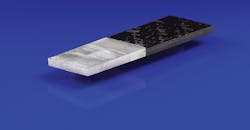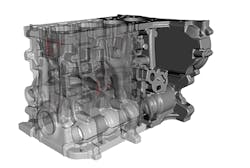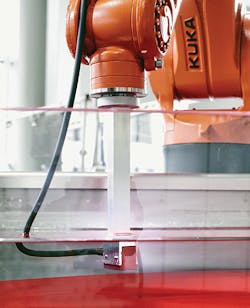In the high-tech world, in commodity-grade consumer products, and in between across the vast span landscape of design engineering, “lightweight” is the defining principle. It follows that products and systems designed to achieve low-mass or lightweight objectives frequently incorporate specialty alloys or composite materials. “Hybrid” structures that combine fiber composite materials and/or wiring with lightweight metal alloys are a recent devlopment, and may be especially effective for automotive and aerospace parts. The current “state of the art” involves bonding or bolting together the metallic and composite elements of these designs.
Over the past several years Germany’s Fraunhofer Institutes for Manufacturing Technology and Advanced Materials (IFAM) have been developing joining methods for various types of hybrid joints involving high-pressure diecastings. In contrast to bonding or bolting/riveting components together, casting designs of customized composition results in parts that are comparatively more compact, lighter, and exhibit better galvanic isolation (i.e., any electrical circuits incorporated in the structure are separated to eliminate stray currents; signals may pass between galvanically isolated circuits, but stray currents, such as differences in ground potential or currents induced by AC power, are blocked.)
A new line of research has taken up the matter of non-destructive testing for quality in hybrid diecastings, for which there is currently no suitable method. Even so, such testing is necessary to qualify a part for industrial-scale production.
The HyQuality research project — titled, “Hybrid casting production with standardized quality assurance” — draws technical expertise from three Fraunhofer Institutes, IIS/EZRT, IZFP, and IFAM, to jointly develop appropriate methods for NDT testing. Their goal is to define an inline inspection method that will identify and allow analysis of any type of quality defect in the castings.
In order to precisely detect the contact surfaces between fiber, wire, or sheet-metal reinforcements and the cast matrix, and to evaluate their quality, imaging technology is used to show the material in the highest possible resolution. X-ray technology, computed tomography (CT) and thermography are three of the technologies considered.
Industrial X-raying, especially CT, is effective for three-dimensional inspection of components. It grants a look into the interior of an object and is therefore excellent for making visible even tiny defects within the materials. EZRT, the Development Center for X-ray Technology, is an R&D center with core competencies in non-destructive monitoring throughout product lifecycles. One focus of development is production monitoring in foundries using inline CT systems, which are able to detect deviations from the optimal production process at an early stage.
In addition to X-ray methods, the project is pursuing thermographic, acoustic, and magnetic inspection by the Fraunhofer Institute for Non-Destructive Testing (IZFP.) “Active thermography” achieves rapid, easily automated defect detection, such as crack detection and identification of delamination and fiber fractures in carbon-fiber-reinforced plastic components.
Depending on the component, excitation occurs using optical impulses, ultrasound, or induction. With a resolution of about 15 mK, and an image frequency of 20 kHz, it can detect small variations in thermal flow, which may be caused by defects.
Ultrasound testing is another NDT method. Depending on the requirements, tests using electromagnetic ultrasound (EMAT), airborne ultrasound, or high-frequency ultrasound in water immersion are options. Multi-frequency eddy-current testing is another possibility. By exciting frequencies in the range of 100 Hz to 10 MHz, microstructural differences in metal can be detected, along with layer separation and cracks.
The IFAM researchers’ goal is to test all of these approaches to identify effective NDT methods that can be integrated to the production process for hybrid castings. In order to determine the suitability of each testing method, and to make scientific comparisons, samples and components produced for the project will be destructively tested after the initial NDT method. According to IFAM, the results of these destructive tests will provide reference values and comparative standards for the various NDT methods.
About the Author
Robert Brooks
Content Director
Robert Brooks has been a business-to-business reporter, writer, editor, and columnist for more than 20 years, specializing in the primary metal and basic manufacturing industries. His work has covered a wide range of topics, including process technology, resource development, material selection, product design, workforce development, and industrial market strategies, among others.


